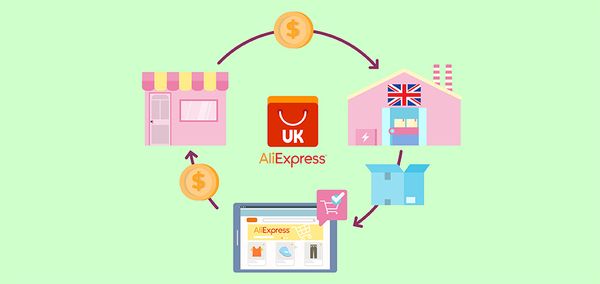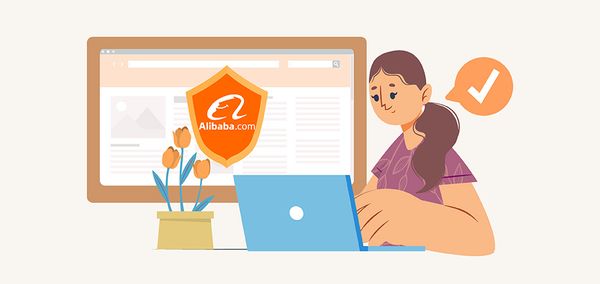How to Sell on Craigslist: Stepwise Guide to Successful Business

The internet era has revolutionized how we buy and sell, and among the giants of online classifieds stands Craigslist. Did you know that Craigslist attracts users from 70 different countries? Simplistic yet powerful, it's a platform that promises potential but demands knowledge. Let's plunge deeper into mastering the art of selling on Craigslist.
What Is Craigslist and Why Sell on It
Craigslist, founded in 1995, serves as a digital bulletin board for various classified ads. With sections ranging from job opportunities to housing to personal items for sale, its regionalized structure allows local buying and selling, making transactions more personal and logistics simpler.
Selling on Craigslist means tapping into a community-driven platform with a vast audience without incurring fees.
Step 1 - Set the Stage for Success
Research: This is your foundation. It's not just about throwing up an ad but understanding where it fits within the larger market.
- Researching Your Target Market and Audience: Every product has a demographic sweet spot. Understanding who might be most interested in what you're selling can significantly improve your listing's appeal. For example, if you're selling skateboards, you might focus on teenagers and young adults. Tailor your listing with verbiage, pictures, and pricing that resonates with this group.
| Get Started Now to Grow Your Online Business with the Best AliExpress Dropshipping Tool - DSers! |
- Identifying popular categories and trends: To optimize visibility, it's crucial to understand what's trending on Craigslist. Regular visits to the site's "Best Of" section can provide insights into the current demands. Additionally, notice which products are gaining traction and see how you can position yours similarly.
- Understanding local preferences and demands: Regional idiosyncrasies play a big role on platforms like Craigslist. A product in demand in one area might not have the same reception in another. For example, selling winter gear in Florida might not be as lucrative as in Minnesota.
- Creating A Compelling and Informative Product Listing: This is your product's resume.
- Crafting an attention-grabbing title: Your title should make potential buyers want to click. Use words that provoke interest and provide clarity. For instance, instead of a vague "Phone for Sale," "Unlocked iPhone 12 - Mint Condition, Great Price!" might yield better results.
- Writing a detailed and honest description: Here's where you delve into specifics. Mention the brand, how old the item is, its current condition, and any other salient details. The more transparent you are, the more you'll be trusted.
- Highlighting key features and benefits: Why is your product unique or valuable? Maybe it's a limited edition or has a feature no longer available.
- Setting a competitive price: Scout similar listings on Craigslist. Price your product competitively; not so high it's ignored, but not so low that its value is questioned.
Step 2 - Capture High-Quality Images
A picture is worth a thousand words, especially in sales.
- Importance of High-Quality Photos: In the digital age, clear, high-quality photos can make or break a sale. They provide potential buyers with a tangible sense of the item and can boost the professionalism of your listing.
- Using Natural Light: This doesn't mean shooting outside but using indirect natural light, like near a window, can make your product look its best.
- Multiple Angles and Close-ups: Give a holistic view. From the front, back, sides, and any unique features up close. This not only highlights the product's aesthetics but also its functionality and condition.
- Showcasing Imperfections: Integrity sells. If there's a scratch or a dent, show it. This reduces the chances of disputes later and establishes trust.
- Editing for Clarity, not Deception: Basic enhancements like cropping or adjusting brightness/contrast can improve image quality. But avoid over-editing or using filters that might misrepresent the product.
Step 3 - Craft an Engaging Listing
Draw your potential buyer in.
Utilizing persuasive language and storytelling: Every product carries a history, and every history has a story. It's crucial to tap into this narrative potential. When you weave a story around the item you're selling, it humanizes the product, adds depth, and fosters a unique connection between the buyer and the item.
For example, consider the guitar you’re about to list. Instead of a bland description, paint a picture. "This was the guitar that echoed my emotions on my first date, a silent witness to a night filled with laughter and soft tunes. It holds a special place in my heart and is waiting for its next memorable chapter with its new owner." Such a description can ignite emotions and make your listing stand out amidst the generic “Guitar for sale” posts.
Addressing potential buyer concerns preemptively: Buyers come with a set of concerns, sometimes voiced, sometimes silent. By addressing these concerns in your listing, you save the buyer the time of reaching out with questions and showcase that you're a thoughtful seller.
Highlight any warranties that are still valid or if an extended warranty is available. Mention the durability aspects, especially if the product is known for its longevity. Compare it subtly with other similar products, showcasing its advantages. For instance, if it's a phone you're selling, you might want to highlight its superior battery life compared to other models.
Providing clear contact information: Potential buyers shouldn't have to dig around for ways to reach you. Yet, in the age of digital scams, safety is paramount.
Consider setting up a separate email just for sales to avoid spam on your personal one. If providing a phone number, specify your preferred communication mode - calls, texts, or WhatsApp messages. While it's essential to be accessible, avoid sharing personal addresses or secondary contact details unless absolutely necessary.
Incorporating keywords: Just as SEO is crucial for websites, appropriate keywords ensure that your listing appears when potential buyers search for related products.
Put yourself in the buyer's shoes. If you were looking for the product you're selling, what would you type in the search bar? Ensure that these keywords naturally fit into the product description and title. For instance, if you’re selling a vintage typewriter, potential keywords could be “antique,” “working condition,” “rare model,” or the specific brand and model name.
Step 4 - Navigate Craigslist's Posting Process
Posting on Craigslist, while straightforward for the occasional seller, can be optimized for greater efficiency and visibility. It's like setting up a storefront: the better you set it up, the more footfall (or in this case, clicks) you're likely to get. Let's get that listing up!
- Registering for a Craigslist account: While Craigslist does allow for postings without an account, having one significantly improves your selling experience.
- Organization: Track all your listings in one place.
- Efficiency: Easily renew, edit, or delete your listings without navigating multiple emails or links.
- Credibility: Regular sellers can build a reputation over time, making it easier to attract potential buyers.
- Selecting the category and subcategory: Craigslist is vast, with a myriad of categories and subcategories. Correctly placing your item ensures it reaches the intended audience.
- Misplacement repercussions: Potential buyers might miss your item if they're browsing the right category but your item isn't there. Misplaced items can be flagged by users or Craigslist itself, leading to the removal of the listing.
- Uploading images: A textual description creates an understanding, but images create a visual connection. Refer back to the photo-taking tips provided earlier. Clarity, authenticity, and comprehensive coverage of the product should be your guiding principles.
- Reviewing and confirming: Think of this step as your final quality check. Go through your description to check for any typos or unintentional errors. Double and triple-check your contact information. A single wrong digit can direct potential buyers elsewhere.
- Understanding posting guidelines: Each platform, including Craigslist, comes with its dos and don'ts. Familiarizing yourself with these ensures your account remains in good standing. Steer clear of listing prohibited items. The list includes but isn't limited to illegal items, recalled items, or certain services. Ensure your product description and images align with Craigslist's policies to prevent potential flags or removals.
Step 5 - Safety and Security Measures
Selling on a platform like Craigslist, while efficient, can come with its own set of challenges concerning safety and security. Given that transactions often move from virtual discussions to real-world interactions, taking measures to protect yourself should always be front and center.
- Meeting in public places: The location of your transaction can make a world of difference in ensuring safety. Public places tend to be more secure due to the presence of multiple people, deterring ill-int-10entioned individuals.
- Bringing a companion: This discourages potential foul play.
- Trusting your instincts: If a deal feels off, it's okay to walk away.
- Spotting scams: Be wary of non-local buyers or those who only want to communicate via email.
Step 6 - Close the Deal
Making a sale on Craigslist isn't just about listing an item and waiting. The final stage of the transaction is often the most crucial, where you ensure not only the exchange of goods and money but also uphold professionalism, ensuring a smooth experience for both parties.
- Negotiations: Be open but know your bottom price.
- Accepting payments: Cash is king. Be wary of checks or money orders.
- Bill of sale or receipt: This is especially crucial for high-priced items. It protects both parties.
- Packaging: If the item is fragile, ensure it's well-packed.
- Feedback: Ask for a testimonial or save the chat as proof of a successful transaction.
Step 7 - Manage Multiple Listings
If you're considering making selling on Craigslist more than just a one-time endeavor, managing multiple listings effectively becomes crucial. As the volume of your listings increases, so does the complexity. But with the right tools and strategies, you can ensure that you remain on top of your game.
- Organizing your listings: In the world of online sales, being systematic can significantly optimize your selling experience. Use spreadsheets or apps to track items, prices, and interested buyers.
- Renewing listings: Craigslist is a bustling marketplace. As time progresses, older listings tend to get buried beneath newer ones. Moreover, listings eventually expire.
- Adapting strategies: Learn from unsold items. If a particular item isn't getting traction, don’t be afraid to revamp its entire listing. New images, a more compelling description, or even a slight price drop can make all the difference.
Conclusion
Selling on Craigslist, much like any other venture, is an art that marries attention to detail, understanding of the audience, and effective presentation. It's not just about decluttering or making a quick buck. Done right, it can be a lucrative side hustle or even evolve into a full-fledged business venture.
Every stage, from research to finalizing the deal, is an opportunity to learn, adapt, and refine your approach. So the next time you're about to list an item, remember: you're not just listing, you're marketing. And every successful sale is not an end, but a stepping stone to becoming a savvier, smarter seller. Happy selling!













 Company
Company
 Why Choose DSers
Why Choose DSers
 Blog
Blog
 Help Center
Help Center




 Live Chat
Live Chat